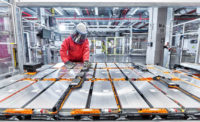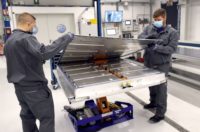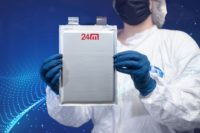LEICESTER, England—Engineers at the Faraday Institution and the University of Leicester have developed a new method to recycle electric vehicle batteries using ultrasonic technology. The process removes and separates critical materials, such as cobalt, lithium, manganese and nickel, from used batteries in a fast, economical and environmentally-friendly way.
Current lithium-ion battery recycling methods typically use a shredder or high-temperature reactor. A complex set of physical and chemical processes are subsequently needed to produce useable materials. These recycling routes are energy intensive and inefficient.
If an alternate approach is taken and end-of-life batteries are disassembled rather than shredded, there is the potential to recover more material, in a purer state. The disassembly of lithium-ion batteries has also been shown to recover a high yield (around 80 percent of the original material) in a purer state than was possible using shredded material.
The ultrasonic delamination technique effectively blasts the active materials required from the electrodes leaving virgin aluminum or copper. The process is highly effective in removing graphite and lithium nickel manganese cobalt oxides.
“This novel procedure is 100 times quicker and greener than conventional battery recycling techniques and leads to a higher purity of recovered materials,” claims Andrew Abbott, a chemistry professor at the University of Leicester. “It essentially works in the same way as a dentist’s ultrasonic descaler, breaking down adhesive bonds between the coating layer and the substrate.
“It is likely that the initial use of this technology will feed recycled materials straight back into the battery production line,” explains Abbott. “This is a real step change moment in battery recycling.”
“For the full value of battery technologies to be captured…we must focus on the entire life cycle—from the mining of critical materials to battery manufacture to recycling—to create a circular economy that is both sustainable for the planet and profitable for industry,” adds Pam Thomas, CEO of the Faraday Institution.



